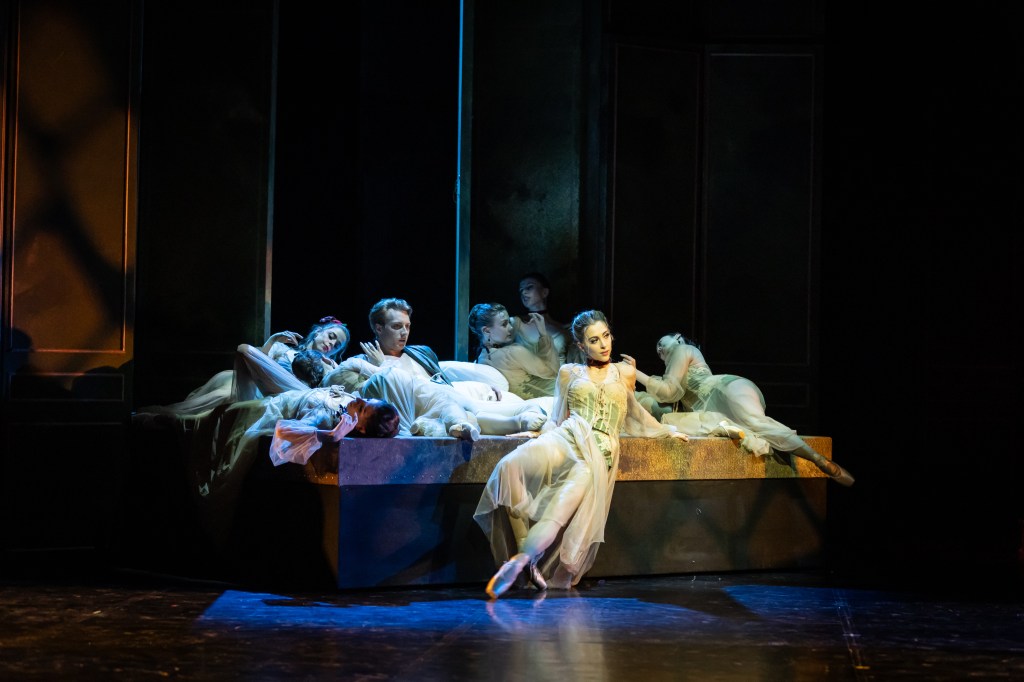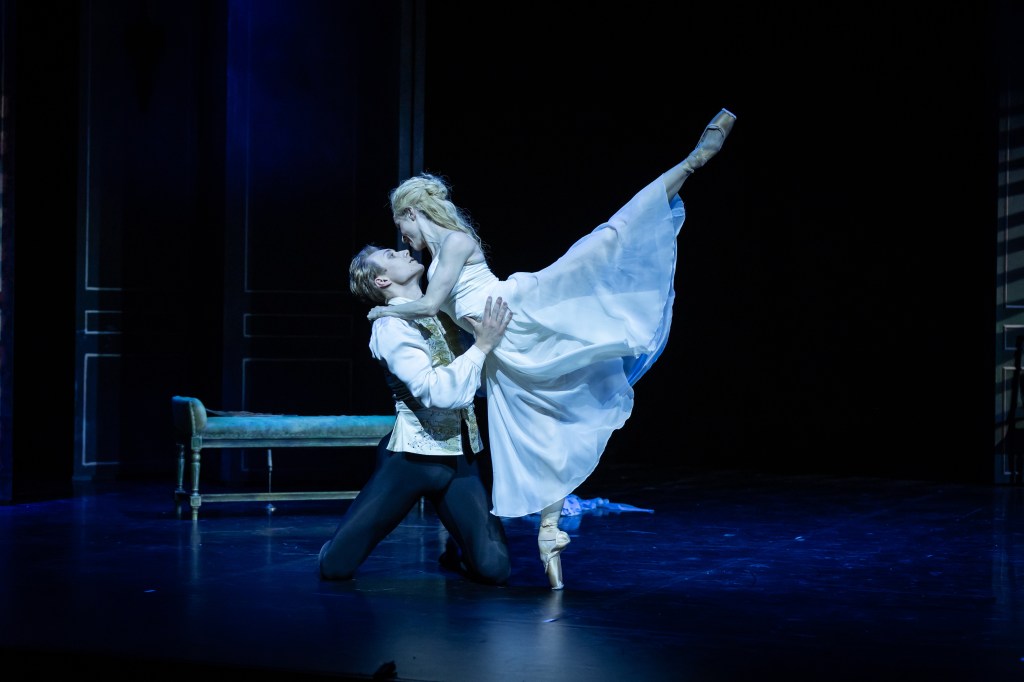Sauciness tinged with sadness in Dangerous Liaisons
The late Liam Scarlett’s sexy masterpiece Dangerous Liaisons is being remounted by Queensland Ballet in a kind of tribute to his choreographic genius.

Think of ballet as light and fluffy? Think again. Dangerous Liaisons will beguile you with its opulent beauty and perhaps shock you with its depravity.
Six years ago the ballet’s creation for Queensland Ballet by internationally acclaimed QB artistic associate Liam Scarlett was a feather in the company’s cap. The full-length adaptation of the infamous 18th century French epistolary novel attracted global attention through the choreographer’s profile as one of his generation’s brightest talents – and the result was world-class.
Bold, unflinching and eloquent, Dangerous Liaisons reverberated as a fertile collaboration that showcased not only Scarlett’s gifts for nuanced storytelling and characterisation but also the dramatic range of QB’s artists, who sank their teeth into the rare opportunity with relish.
Just two years later the work took on added symbolism and became a bittersweet legacy gift when Scarlett took his own life after the ballet world had shunned him amid unproven allegations of personal misconduct. So remounting Dangerous Liaisons now, especially while a number of role originators and 2019 cast members remain with the company, is welcome.
The theatre’s intimate viewpoint enables patrons to zoom in on facial detail and physical expression, ramping up intensity
An added element of interest comes via the production’s transfer from QPAC’s Playhouse to the 319-seat Talbot Theatre at the Thomas Dixon Centre, Queensland Ballet’s home in West End.
You might like
It takes on a chamber opera atmosphere befitting the story’s cloistered intrigues. The theatre’s intimate viewpoint enables patrons to zoom in on facial detail and physical expression, ramping up intensity, while distancing some staging gives the dancers the freedom to perform more graphic movement fearlessly.
Thus the sense of exploitation remains, as intended, on the virtuous characters preyed upon for sexual sport by depraved aristocrats Merteuil and Valmont. On opening night they were compellingly portrayed by soloists Georgia Swan, who alternated as Merteuil in 2019, and role debutant Edison Manuel.
While Swan reinforced her aptitude for fleshing out hard-edged characters, 23-year-old Manuel’s commanding conviction was a revelation. Separately each was fierce and together they were fearsome.
The metaphor of exterior beauty belying inner ugliness is reflected in the characters’ veneer of propriety, trappings of title and their entitlement. Beyond the lush silks and velvets, tailored and embellished into fashionable finery, Tracy Lord Grant’s design fittingly relies on illusion: settings of architectural grandeur are conjured by an array of mobile vertical panels that also reveal doors and windows that transform further under Kendall Smith’s vibrant lighting.
As might be expected, the downside of audience proximity is that any missteps are magnified. And although the stage is large, its proportions result in the group work occasionally appearing cramped. Any errors were minor and the dancing across the ranks was excellent. One senses that the work’s meaning to the artists, as well as the opportunity it presents for personal expression – even in the smaller parts – has galvanised the company to deliver its absolute best.
Principals Lucy Green and Yanela Pinera are reprising the roles of Valmont and Merteuil’s victims Madame de Tourvel and Cecile. Both their dancing and acting communicate complex emotion that makes for confronting viewing.
Subscribe for updates
However, in a dramatic context the casting of Vanessa Morelli as Cecile’s mother isn’t a natural fit, but won’t be obvious to audiences if they haven’t read the synopsis or cast list beforehand. This prep is essential in order to follow the story’s intricacies. (The diagram of characters is instructive, but the photos of the original cast members who aren’t returning might actually confuse some.)

While Valmont and Merteuil have charisma, there is nothing redeeming about either of them. Valmont developing feelings for Madame de Tourvel shows a glimmer of humanity lacking in Merteuil, but ultimately how he treats both conquests is unforgiveable.
It’s sordid stuff and, depending where you sit on the moral compass, you might feel varying degrees of outrage and disgust at the depths of human despicability you’re watching. You could be left wanting to wash off the grubbiness.

On a purely physical level, this unusually racy side of ballet displayed by the QB women and men will likely be enjoyably eye-opening to others. There is much more to the performances than appearance, however. And that’s the reason you won’t forget first company artist Libby-Rose Niederer in the ballet’s most provocative role of courtesan Emilie.
The reason to see Dangerous Liaisons is the fact it evokes visceral responses. It’s not about needing to like the characters or feeling comfortable with what you’re watching play out. (If you don’t, there’s hope for humanity.)
This work’s power is in exemplifying art’s capacity to tap into the gamut of the human experience. There’s so much to admire and enjoy. At the heart of its stunning aesthetic, physical prowess and emotive characterisations is Scarlett’s movement, innately attuned to Saint-Saen’s music, played and recorded by Camerata – Queensland’s Chamber Orchestra.
Scarlett’s pas de deux depict a wide range of interactions combining creativity and clarity. The romantic duets of Madame de Tourvel and Valmont are kinetic love letters, masterfully juxtaposing imaginative lifts with informal motifs and gestural poses we instantly understand.
While it’s now hard to separate the ballet and its historical context, Dangerous Liaisons premiered as a significant artistic achievement and this version proves the company’s mettle and honours its creator by remaining so.
Dangerous Liaisons continues at the Talbot Theatre, Thomas Dixon Centre, West End, until October 18.
queenslandballet.com.au/performances/2025/dangerous-liaisons

